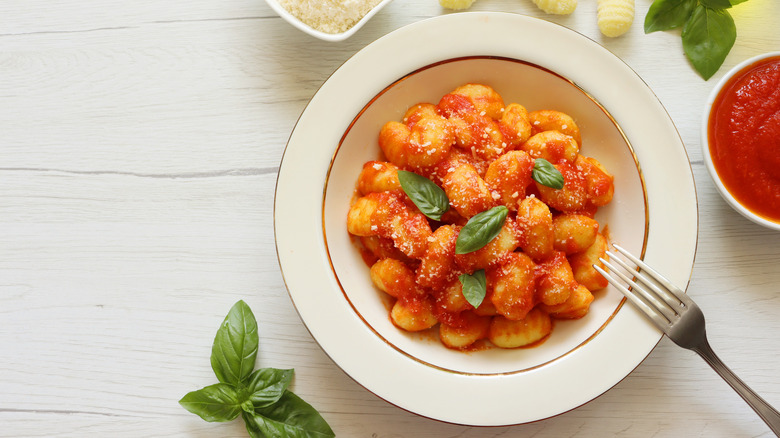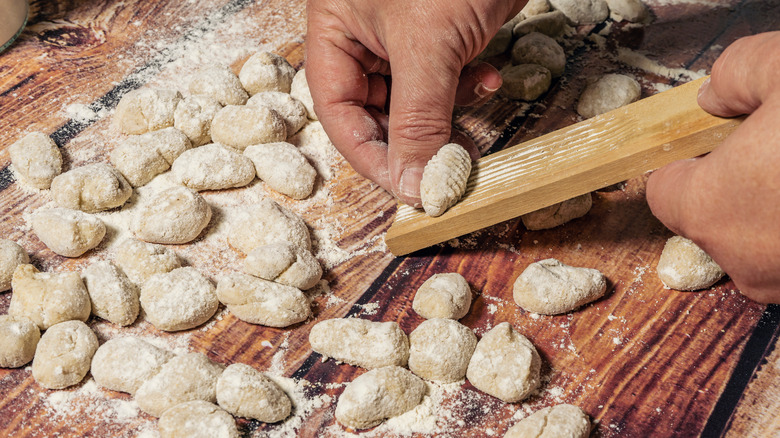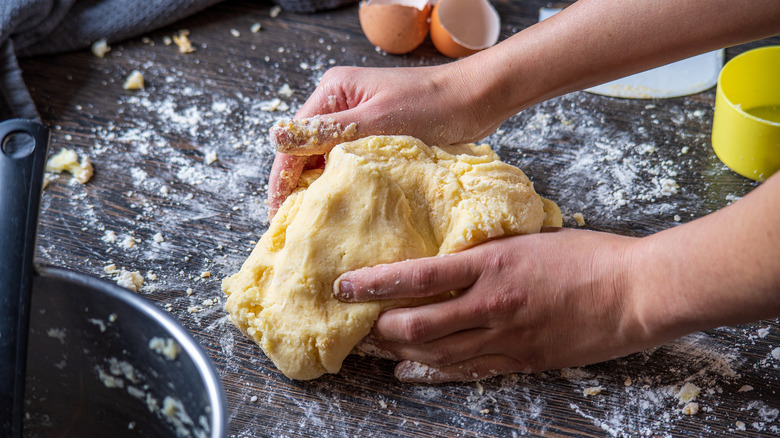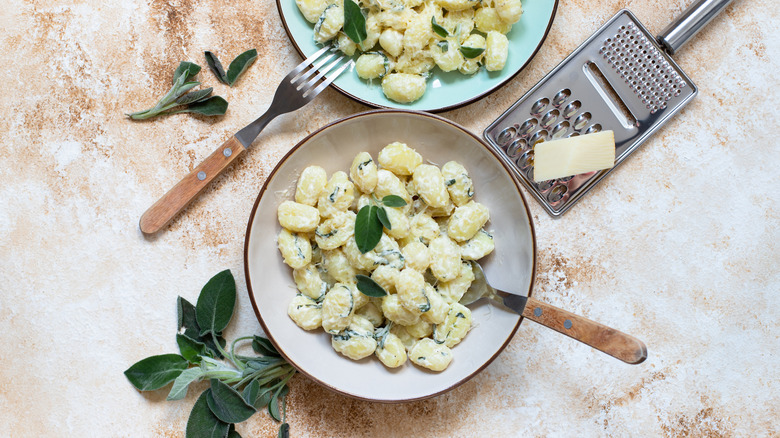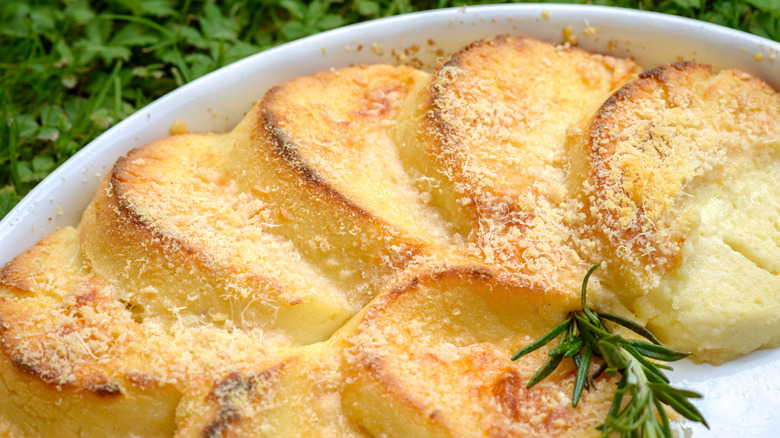Can You Make Gnocchi Without Potatoes?
Gnocchi have been part of Italian cuisine for centuries: they're sometimes described as a precursor to modern pasta. Like pasta, the small lumps of dough are boiled before being served. Despite their similarities, though, gnocchi are considered dumplings.
While gnocchi became popular among Italian nobles during the Renaissance, they were popularized by the lower classes. Gnocchi are considered an example of cucina povera or "poor cooking." The term refers to the recipes and techniques used by the lower classes, characterized by simplicity, ingenuity, and an ability to make do with what was available.
The word gnocchi is plural: Italians call a single dumpling gnocco. The term likely originated from the same root as knuckle, referencing their lumpy, rounded shape. However, the word means different things in different parts of the country. The dish that Romans call gnocchi is entirely different from the little dumplings served in Northern Italy.
One of the most prevalent forms of gnocchi, and perhaps the best-known kind outside of Italy, is potato gnocchi. Potato gnocchi is so popular that many people consider potatoes to be an integral ingredient, but they're not. Next time you make gnocchi, consider trying one of the many alternate recipes popular throughout Italy.
Yes, you can make gnocchi without potatoes
It's not only possible to make gnocchi without potatoes, it's traditional. After all, Italians made gnocchi for centuries before potatoes were introduced to Europe. Even after explorers brought potatoes back from the New World, it took Italian cooks a while to adapt. Today, a wide variety of gnocchi recipes can be found throughout Italy, many without potatoes. So, if the craving for gnocchi strikes when you're out of potatoes, save yourself a trip to the grocery store. While potatoes are a great addition to, well, almost anything, there are plenty of alternatives.
An additional perk of potato-less gnocchi: They're typically quicker and easier to make. Making potato gnocchi requires skinning, boiling, mashing, and cooling potatoes to mix into the dough, a laborious and time-consuming process. Ditching the potatoes means you can cut your time in the kitchen down significantly — and whip up a bowl of soft, steaming dumplings in as little as 20 minutes.
No matter what ingredients you choose to use, the process of shaping and cooking gnocchi is fairly consistent. Once the ingredients have been combined into a smooth workable dough, divide the dough and roll it into ropes and cut them into inch-long pieces. Cook the gnocchi in boiling water for a few minutes until they rise to the surface, then scoop them out and serve them topped with your favorite sauce, fresh out of the pot.
Water and flour gnocchi
Traditional Italian gnocchi are straightforward: just warm water and flour. There's significant room for variation, though. Some recipes incorporate egg or grated parmesan, while others call for a splash of olive oil. This type of gnocchi is tougher than potato gnocchi, so if you're partial to a firmer texture, these simple dumplings might be right up your alley.
The ingredients are either mixed in a bowl or cooked on a stovetop, then kneaded and left to rest before being shaped and boiled. If you've ever made pate au choux, the stovetop process may seem familiar — and you wouldn't be the first to notice the similarity.
Inspired by Italian gnocchi, French chefs created their own version using the traditional choux pastry process. French gnocchi, often called gnocchi a la Parisienne, are boiled just like Italian gnocchi but still have distinct differences. French gnocchi are piped into the water with a piping bag rather than shaped by hand, and they're typically fried or baked with cheese before being served, often doused with bechamel sauce.
Ricotta gnocchi
Love the soft, pillowy texture of potato gnocchi, but not so keen on putting in the work? Try ricotta gnocchi. This popular variation involves stirring flour, egg, and add-ins like parmesan into soft ricotta cheese. The result is light and fluffy, with a subtly cheesy flavor, the perfect vehicle for red sauces — or even eaten on their own, tossed with herbs.
One of the earliest documented recipes for gnocchi, dating back to the fourteenth century, calls for soft, fresh cheese. While you probably won't be able to get ricotta straight from the farm like a fourteenth-century Italian peasant, fresh cheese is still essential. Get the best ricotta you can find. Cheap ricotta has a lot of unnecessary add-ins, so check to make sure that milk and salt as the only ingredients. Fresh, whole-milk ricotta may be pricey, but it's worthwhile. Remember, the ricotta is the star of the show.
Since ricotta gnocchi are pretty cheesy, consider serving them with red sauce. Alternately, lightly fry them in butter to give them a crispy texture, and top them with herbs.
Gnocchi alla Romana
If you order gnocchi in Rome, you may be in for a surprise: Roman gnocchi are nothing like the soft, pillowy dumplings popular in Northern Italy. Gnocchi alla Romana typically take the shape of large, flat disks made from polenta or semolina flour. The polenta or semolina is cooked with butter, egg yolk, and milk, then smoothed into a flat, even layer before being cut into circles and layered in a baking dish.
Rather than boiling these gnocchi, Roman chefs bake them at a high temperature with toppings like cheese and butter. The result is rich and hearty, more like a casserole than a precursor to pasta. Top it with tomato sauce or keep it simple with a salad. While gnocchi alla Romana isn't difficult, you can't whip it up in a few minutes like other types of gnocchi. The dish is time-consuming, so if you decide to give it a try, start a few hours before you plan to serve it.
